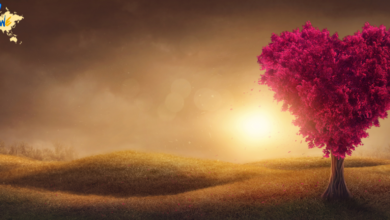In 1967 cultural historian Lynn White gave a lecture entitled, “The Historical Roots of Our Ecologic Crisis.” His talk was later published in the magazine Science. The article came out a few years after Rachel Carson’s book Silent Spring which helped ignite the fledgling environmental movement and had the opposite effect, creating a firestorm of controversy. White argued that the environmental crisis was not just as simple as having more cars or more factories that led to increasingly dangerous amounts of carbon released into the atmosphere. He unequivocally stated that ecological concerns are fundamentally a theological or ideological problem. It is a question of how we see ourselves in relation to creation. White argued that because our Christian theology is based on the idea of dominion over creation it is essentially exploitative of the natural world. He wrote that “what people do about their ecology depends on what they think about themselves in relation to things around them. Human ecology is deeply conditioned by beliefs about our nature and destiny – that is, by religion.” We view creation through the perspective of how creation can serve us. How can creation make my life simpler, easier, better? Creation is a product of our ideas, we are not a product of creation. These ideas center around what humans are, what the Earth and creation is, and what role each plays. Until we “think about fundamentals,” “clarify our thinking,” “rethink our axioms,” White said, we will not adequately address our environmental crisis.
This concept of dominion has its origins in the book of Genesis 1:26: “Then God said, ‘Let us make humankind in our image, according to our likeness; and let them have dominion over the fish of the sea, and over the birds of the air, and over the cattle, and over all the wild animals of the earth, and over every creeping thing that creeps upon the earth.” While dominionist theology has been the accepted model for most of Christianity it is prevalent in all three of the Abrahamic faiths. This overemphasis on anthropocentrism allows us to exploit nature without the least concern for our effect on the rest of creation. The thought becomes ‘We, people are all that is important in God’s eyes.’ Our Christian theology teaches us that the only purpose for creation is to serve humans. We have created both a spiritual and an economic model that suggests a tree has no intrinsic value on its own. A tree is not worthwhile and deserving of care and conservation in its own right but only because of its potential to provide lumber and firewood or perhaps, if it is fruit bearing, food.
The 13th century Catholic theologian St Thomas Aquinas took it a step further. He taught that our only purpose, our reason for being, was to get to Heaven. Everything we do, every action we take is important and good only if it helps us get to Heaven. Anthropocentrism stands at the center of Aquinas’s theology of creation. He taught that while it is wrong to be cruel to animals, it is not because the animal has any intrinsic value on its own. But rather by treating animals cruelly we increase our chances of being cruel to each other thereby further separating us from God and reducing our chances of “getting to Heaven.” In his article; Haecceitas, Theological Aesthetics, and the Kinship of Creation: John Duns Scotus as a Resource for Environmental Ethics Fr. Dan Horan OFM writes: “Given the destructive exercise of human agency that has led to this anthropocene age, it seems unlikely that a theology of creation such as that of Thomas, which sees environmental conservation as a good primarily in light of its current and future usefulness to humanity, could be a tenable resource for environmental ethics. Instead, any contemporary environmental ethic will have to be grounded in a theology of creation that values all aspects of the created order— human and nonhuman, sentient and otherwise—according to an intrinsic frame.”
With the advent of the ecological crisis and climate destruction many faith communities and leaders moved away from the domininist model and embraced a stewardship frame of reference. Instead of the concept of power over and creation being there for our use we focused on the idea that we had to be good caretakers of creation. We started using the terms and developing programs centered around “caring for creation.” We were meant to be good gardeners and tenders of God’s creation. The theology for this model started in Genesis 2:15 “Humans are commanded to care for God’s creation.” In much of Christianity it is taught that God put man in charge of creation as stewards. Who could possibly argue with the idea of being good stewards of creation? The notion is that we as people of faith have a responsibility to do what we can in our own lives to fulfill our calling as stewards, caring for God’s creation. In describing stewardship Dr. Elizabeth Johnson writes: “hierarchical dualism that sees humanity separated from the earth and placed in a position of absolute dominion over all other creatures who are made for us.” In both models there is an inherent anthropocentrism. As Horan wrote: “the condition for advocating ‘stewardship’ with regard to the relational tie between humanity and the rest of creation is a theocentric worldview that mirrors the ostensible bestowal of the natural world to humanity in the dominion model.”
The fallacy of creating a stewardship model based on the idea of separation and a hierarchical structure goes beyond its effects on the environment. We set up a system that teaches “we” have to be responsible stewards. We are at the top and it is our duty to be good caretakers for all below us on the hierarchical ladder. It is safe to assume that the “we” is humanity. But it is just a small step to further delineate the “we” to include just males or even further as western culture has done white males. This is certainly how our sacred stories have been interpreted by the Abrahamic faiths through most of history. As Horan wrote in his book All God’s Creatures: A Theology of Creation: “the hierarchical dualism we see in the stewardship model of creation mirrors the hierarchical dualism that has long concerned scholars critical of sexism, colonialism, and anthropocentrism. Their respective concerns help illuminate the problematic framework underlying the stewardship model.” Folks like Lynn White argued that Christian theology bears a huge burden of guilt for the current environmental crisis. Truth be told, our theological constructs that teach a hierarchical separation are equally at fault in creating a world filled with sexism and racism. In actuality the theology of stewardship is, simply put, dominanist with a conscience.
While this theology centered around stewardship has been prevalent throughout most of the history of the Abrahamic faiths, it is not the only model of creation. Two of our perhaps most honored and beloved spiritual leaders, the 13th century Muslim Sufi Rumi, and the 13th century Catholic saint, Francis of Assisi preached a different perspective.
They both viewed all of creation not as separate but as part of the whole, connected to everything through God. Their belief could be summed up by the words of the modern Sufi teacher Llewellyn Vaughan-Lee: “The world is not a problem to be solved; it is a living being to which we belong. The world is part of our own self and we are a part of its suffering wholeness. . . It is this wholeness that is calling to us now, that needs our response. It needs us to return to our own root and rootedness: our relationship to the sacred within creation. Only from the place of sacred wholeness and reverence can we begin the work of healing, of bringing the world back into balance.” The idea that Rumi and Francis lived and talked about, and the brilliant late 13th Franciscan theologian and philosopher John Dun Scotus created a technology around, is identified as the kinship model of creation. In his ‘Canticle of the Creatures’ St Francis describes a mystical or a spiritual vision for all of the creative world as brother and sister. When Francis would go out and preach to the birds and trees it was not some crazy “Dr. Dolittle talking to the animals” idea. The idea of caring for all creation was not some paternalistic concept of having dominion or stewardship over creation. Francis believed that God told him to preach the Gospel to all his brothers and sisters and he believed all creatures were his brothers and sisters. In his poetry when St. Francis talked about brother sun and sister moon, it was not just some flowery language but a belief in the connectedness of all creation, a wholeness of being.
Teilhard de Chardin wrote “Evolve or be annihilated.” He wasn’t just talking about physical evolution. Teilhard was referring to evolving spirituality. Scotus proposed a concept he described as haecceitas. As Fr. Horan OFM writes: “Haecceitas offers a radical alternative to the anthropocentric model of creation. Haecceitas de-centers the human being such that it can resituate itself among the rest of creation and in relationship to his or her Creator.” The kinship model of creation offers activists, theologians, church leaders and all who believe we need change, a different paradigm to confront the systematic social structural issues like environmental destruction, racism and sexism.





